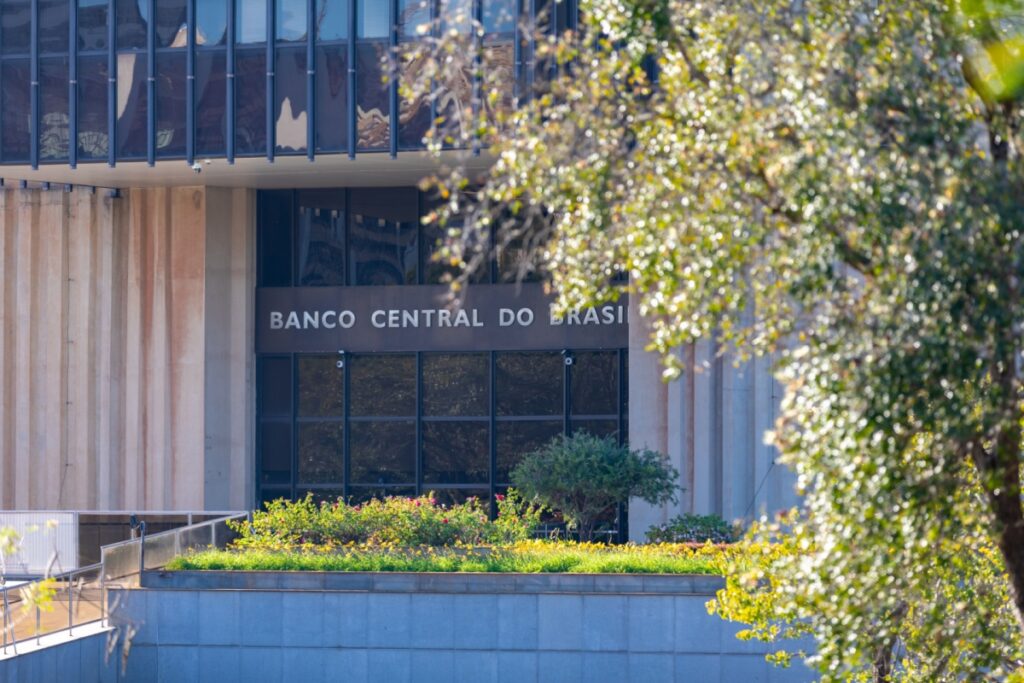Bank lending in Brazil lost additional momentum in August, as restrictive borrowing costs continued to dampen demand in Latin America’s largest economy. Central bank data show that 12-month credit growth eased to 10.1%, down from 10.8% in July, extending a gradual deceleration that has taken hold through 2025.
Credit Growth Slows To A Year-Low Pace
On a monthly basis, the stock of outstanding credit still inched up 0.5% from July, but the broader trend points to slower expansion as policy tightening filters through to households and companies. The central bank now projects annual loan growth of 8.8% for 2025, a slight upgrade from a prior 8.5% estimate but well below the 11.5% expansion recorded in 2024.
Monetary Policy Backdrop Remains Restrictive
The moderation in lending coincides with one of the most restrictive policy settings in two decades. Since September 2024, the central bank has lifted the Selic by a cumulative 450 basis points to 15%, and it held that rate at the last two policy meetings to reinforce disinflation efforts. Officials noted in their latest report that a “more restrictive” stance is working its way through the credit channel, tempering demand for new loans and slowing balance-sheet growth across banks. The data-dependent approach is set to continue amid persistent price pressures and a still-resilient labor market.
Central bank governor Gabriel Galipolo said the economy still shows “signs of resilience”, even as the overall pace cools. He emphasized that policy will remain focused on returning inflation toward the 3% target, and cautioned that keeping rates high long enough to finish the job may prove more challenging than the hike cycle itself. Those remarks underscore why authorities signaled an extended period of restrictive settings, reinforcing headwinds for credit formation through the remainder of the year.
Risk Metrics Edge Higher As Spreads Widen
Credit quality metrics reflected the tighter backdrop. A broad measure of default rates on non-earmarked loans to consumers and businesses rose to 5.4% in August from 5.2% in July, continuing a gentle upward drift as financing conditions bite. At the same time, average lending spreads widened to 32.3 percentage points, compared with 31.8 points a month earlier, indicating banks are pricing more risk into new and outstanding credit. While the move is incremental, the combination of higher funding costs and a softening growth outlook suggests lenders will remain cautious in originating riskier loans, particularly in unsecured consumer segments.
Banks’ preference for risk-adjusted returns typically leads to a rebalancing toward shorter maturities and borrowers with stronger collateral during prolonged tightening cycles. The latest figures, alongside central bank commentary, imply that the credit impulse to domestic demand will stay subdued into the final months of 2025, even as pockets of activity prove more durable. That dynamic is consistent with authorities’ aim to slow inflation without provoking a sharp contraction, but it also raises the bar for investment-led acceleration absent clearer disinflation signals.
Outlook: Slower Flow, Watchful Policy
With credit expanding more slowly and risk indicators nudging higher, the policy discussion now centers on duration, how long the 15% Selic must be maintained to ensure inflation converges to target. The central bank’s 8.8% loan-growth forecast for year-end captures this balancing act: tight enough to curb price pressures, yet not so tight as to cause an abrupt pullback in financing. For borrowers, the implication is a continued emphasis on cash-flow resilience and refinancing discipline, while for banks it points to disciplined underwriting and vigilant provisioning through year-end.
Officials have stressed that further decisions will hinge on incoming data, including inflation prints, activity indicators, and evolving credit conditions. As the default rate and spreads signal a cautious stance from lenders, any near-term improvement in credit momentum will likely require clearer evidence of easing inflationary pressures, or a shift in the growth outlook that allows policy to gradually recalibrate. Until then, the August report reinforces a consistent message: higher rates are working, and bank lending is adjusting accordingly.


